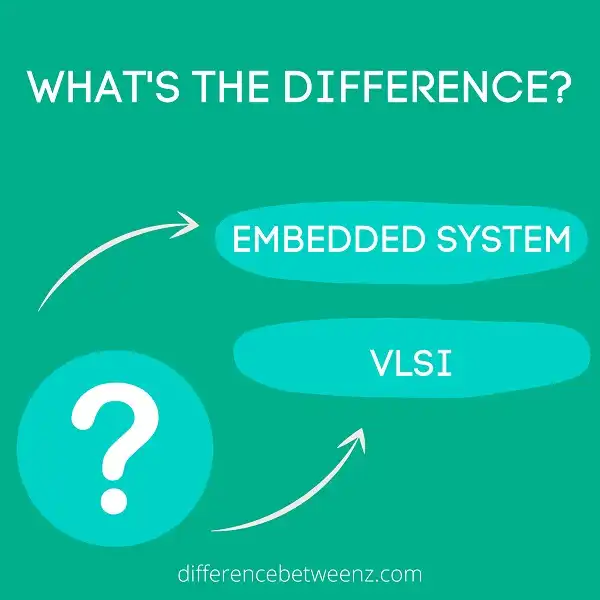There is a lot of confusion about the difference between embedded systems and VLSI. Both are types of electronic systems, but they have different purposes. Embedded systems are designed to control or monitor devices, while VLSI is focused on creating chips for use in electronics. If you’re not sure which one you need, here’s a breakdown of the differences between embedded systems and VLSI designs.
What is Embedded System?
An Embedded system is a system with a computer chip inside it that performs a specific dedicated function. It is embedded as a part of another device and not intended to be used as a standalone system. Embedded systems are found in consumer, industrial and commercial products such as cellular phones, automobiles, routers, TVs, etc. They are also present in the military, biomedical, and aerospace applications. Embedded systems range from simple devices like thermostats to advanced control systems used in aircraft and spacecraft. Embedded system programming is difficult because of the challenges faced by developers like low power consumption, limited resources (memory, processing power, I/O, etc.), real-time constraints, etc.
What is VLSI?
VLSI is an acronym for “Very Large Scale Integration”. VLSI refers to the process of creating integrated circuits (ICs) that contain a very large number of transistors on a single chip. VLSI began in the early 1970s as a way to increase the density of components on ICs. The first VLSI circuits contained just a few thousand transistors, but today’s chips can contain billions of transistors. VLSI has made it possible to create powerful and complex ICs that are used in a wide range of electronic devices, from computers and cell phones to automobiles and aerospace applications. VLSI is an essential part of modern electronics, and will continue to play a vital role in the development of new and innovative technologies.
Difference between Embedded System and VLSI
- Embedded systems and VLSI are two important technologies in the field of electronics. Embedded systems are used in a wide variety of electronic devices, from cell phones to microwave ovens. VLSI, or Very Large Scale Integration, is a type of integrated circuit that can contain millions of transistors on a single chip. Both embedded systems and VLSI are used in a variety of electronic devices, but there are some important differences between them.
- Embedded systems are designed to perform a specific task, such as controlling the engine of a car or playing music from a portable mp3 player. Embedded systems typically have a processor, memory, and input/output devices all on a single chip. In contrast, VLSI circuits are designed to be more general-purpose and can be used for a variety of tasks. VLSI chips typically have more processing power than embedded system chips and can be found in computers and other devices that require high-speed processing.
Conclusion
Embedded systems and VLSI are two different types of system design. Embedded systems are designed for a specific function, whereas VLSI is designed to be flexible and can be used for a variety of purposes. The difference between an embedded system and VLSI has to do with the number of transistors on the chip. Embedded systems usually have fewer transistors than VLSI. This means that embedded systems are cheaper to produce but less versatile than VLSI. If you’re looking for a low-cost option that will still provide some flexibility, embedded systems may be the right choice for you. If you need a more powerful system that can handle a wide range of tasks, go with VLSI.


